-
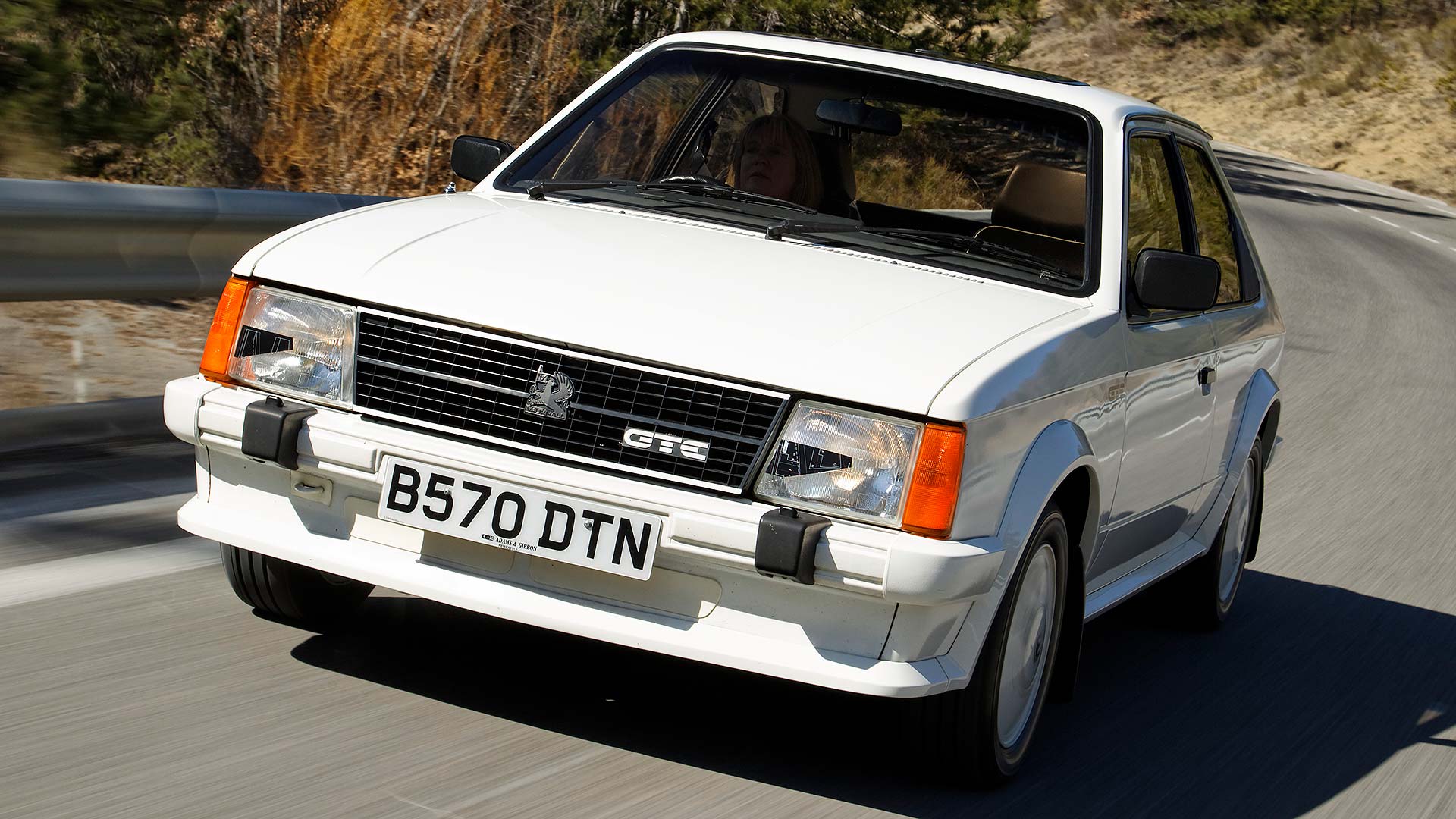
The battle for hot hatch supremacy
© VauxhallEver since the dawn of the hot hatch, Ford and Vauxhall have been locked in a battle for hot hatch supremacy. Today, the Fiesta ST, Focus ST and Focus RS ensure that there’s no real contest, with Ford enjoying bragging rights and ultimate supremacy.
But as our retro hot hatch showdown reveals, Ford hasn’t always had things its own way. We’ve selected a dozen twin-tests – some direct, others indirect – to create a kind of automotive Game of Thrones. You might not agree with our choices, but this is just for fun. Don’t expect dragons or swords in this battle.
-
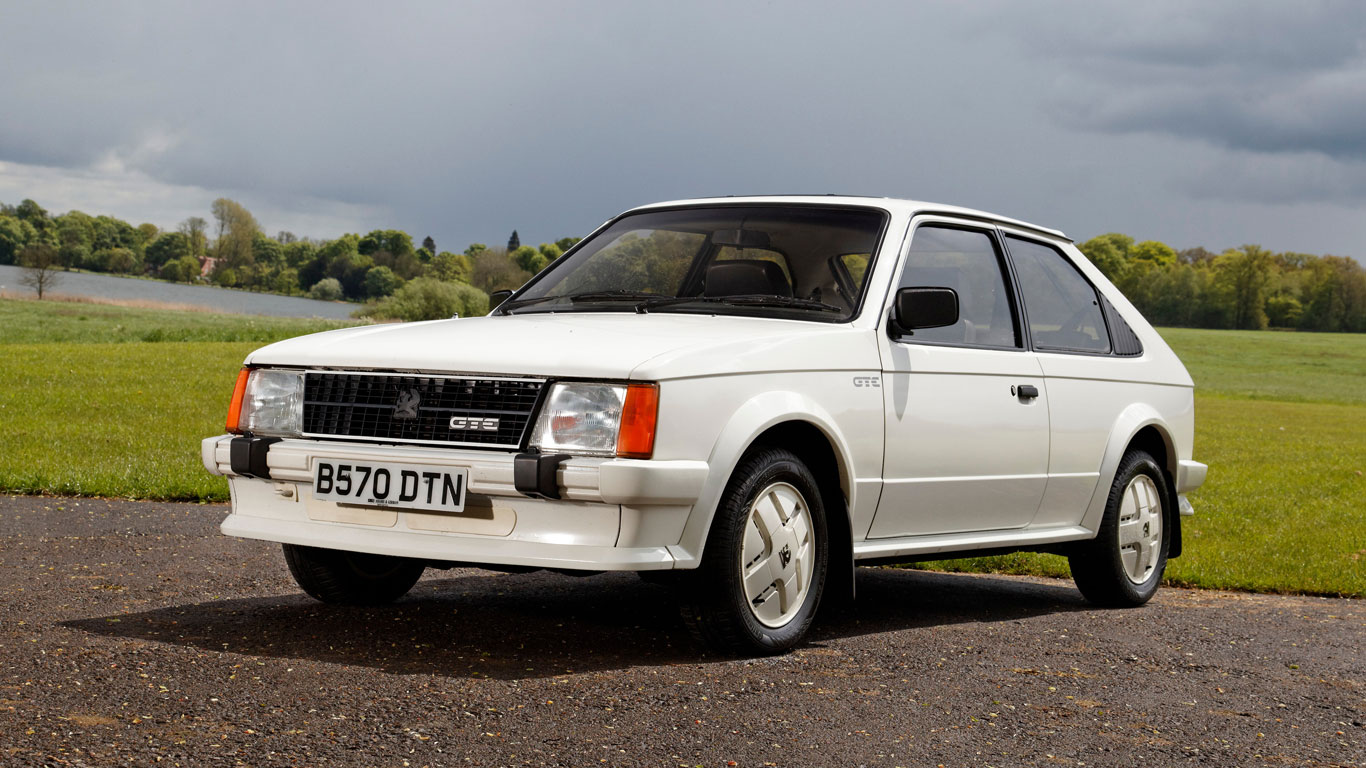
Mk1 Vauxhall Astra GTE
© Vauxhall“Nought to naughty naughty in 8.5 secs,” screamed the double page press ad in big and bold type. The Vauxhall Astra GTE arrived extremely late to the hot hatch party, taking a bow just as the Mk1 Golf GTI was about to be replaced by the Mk2. But it was worth the wait, because the hot Astra was arguably the most convincing challenger to the Golf GTI.
Vauxhall had tested the water with the lukewarm Astra SR – powered by a 1.6-litre engine – but the GTE upped the ante with power sourced from the fuel-injected 1.8-litre unit found in the Cavalier SRi. Choosing between the Astra GTE and the Golf GTI was tough, which is probably the greatest compliment you can pay to Vauxhall’s upstart.
-
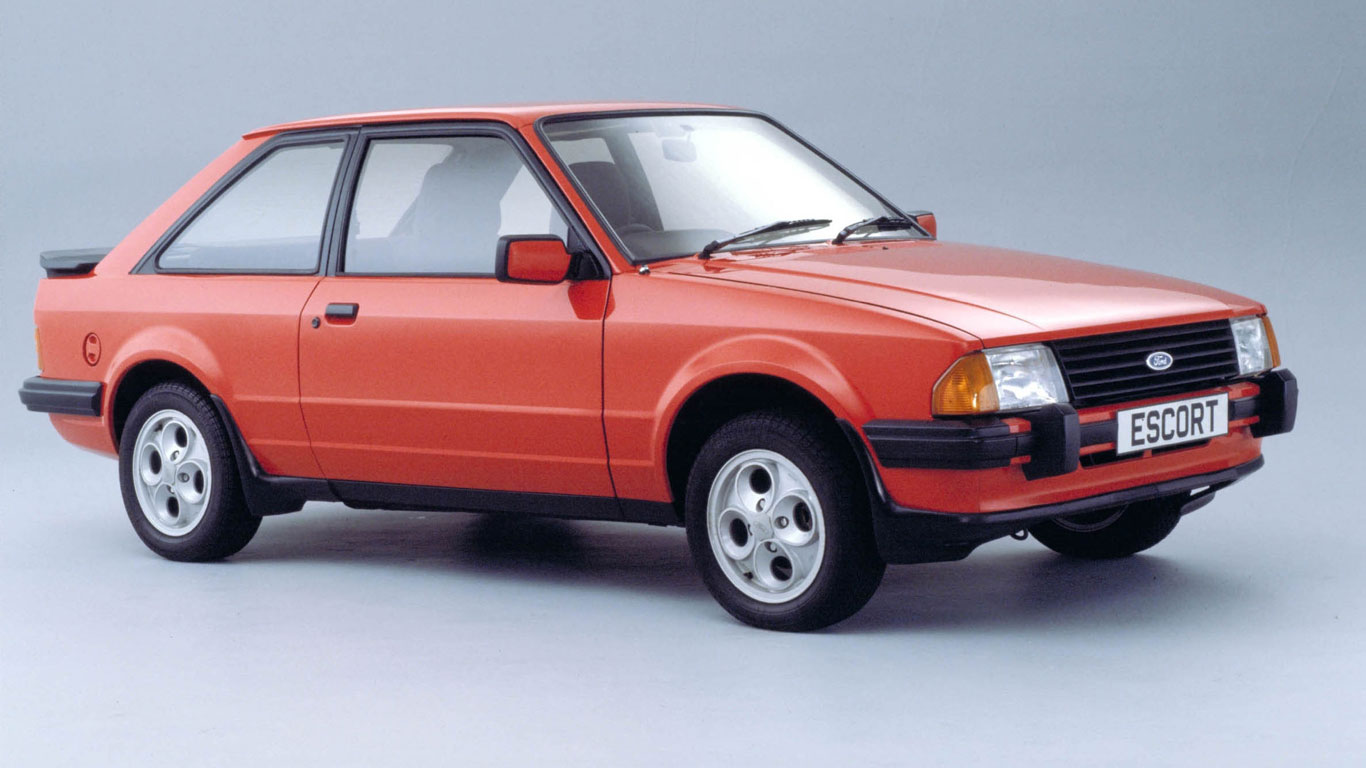
Ford Escort XR3i
© FordIn 1983, an Astra GTE would have set you back £6,412, some £400 less than the Golf GTI. The new Escort XR3i, on the other hand, was cheaper still, at a bargain £6,156. If Vauxhall was the freshman at the school of hot hatches, the hot Escort was a firmly established cool kid, with the XR3 on sale since 1980.
But the XR3i was about far more than a simple ‘i’ on the back of a delightful body. Sure, fuel-injection added more power, but the new car featured a five-speed gearbox and improved handling, edging it closer to the class leaders. But while the XR3i was the populist choice, and arguably the best looking (discuss…), it wasn’t the best hot hatch.
-
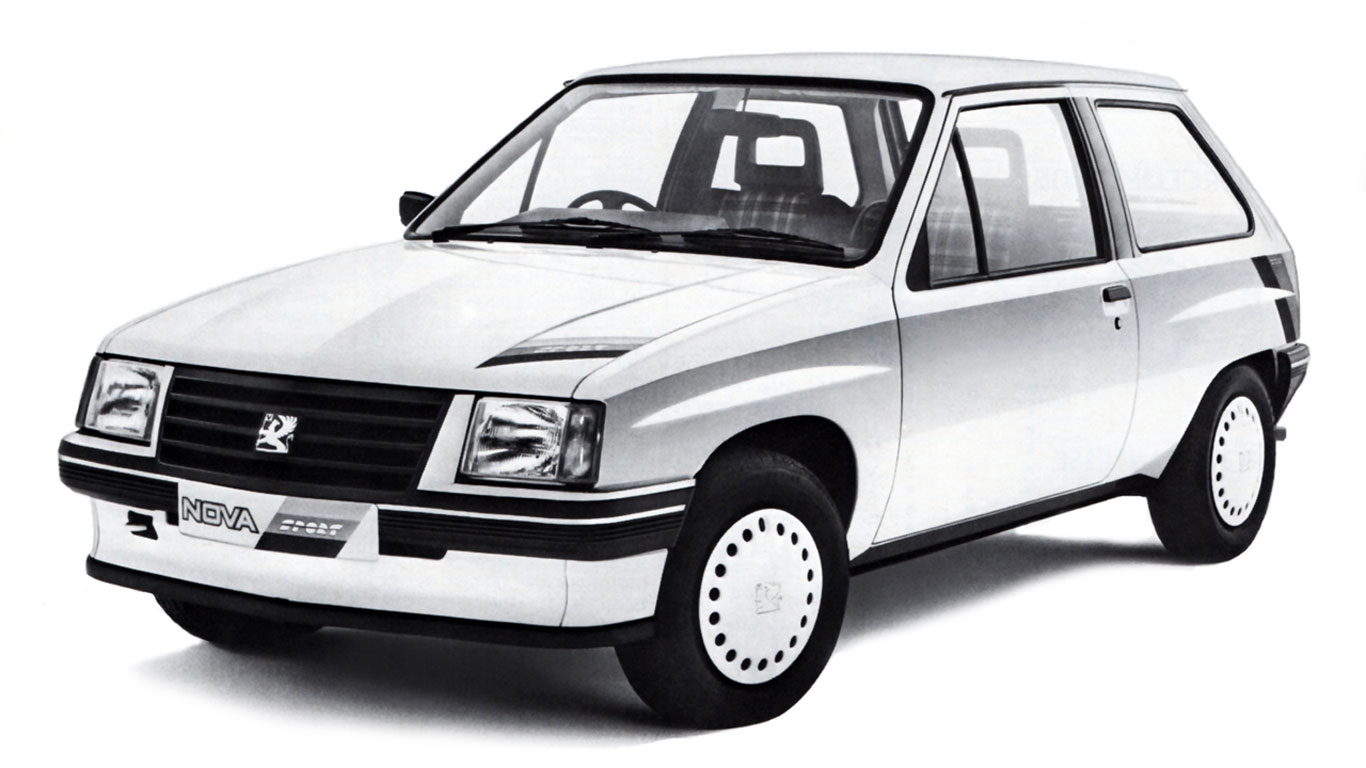
Vauxhall Nova Sport
© VauxhallWe make that one-nil to Vauxhall. In the Nova Sport, Luton has a chance to go two ahead in the battle against Dagenham, as this was a firecracker of a supermini. A total of 500 were built for homologation purposes, blending a base model shell with some SR parts and a 1.3-litre engine armed with a pair of Weber twin-choke carburettors.
Fatter wheels, stiffened suspension, Recaro seats and the instruments from the Nova SR completed the package, to create a rally car for the road. Aside from the discreet red, yellow and grey decals, it looked every inch the Nova driven by your English teacher. But in truth, this was a straight Group A student.
-
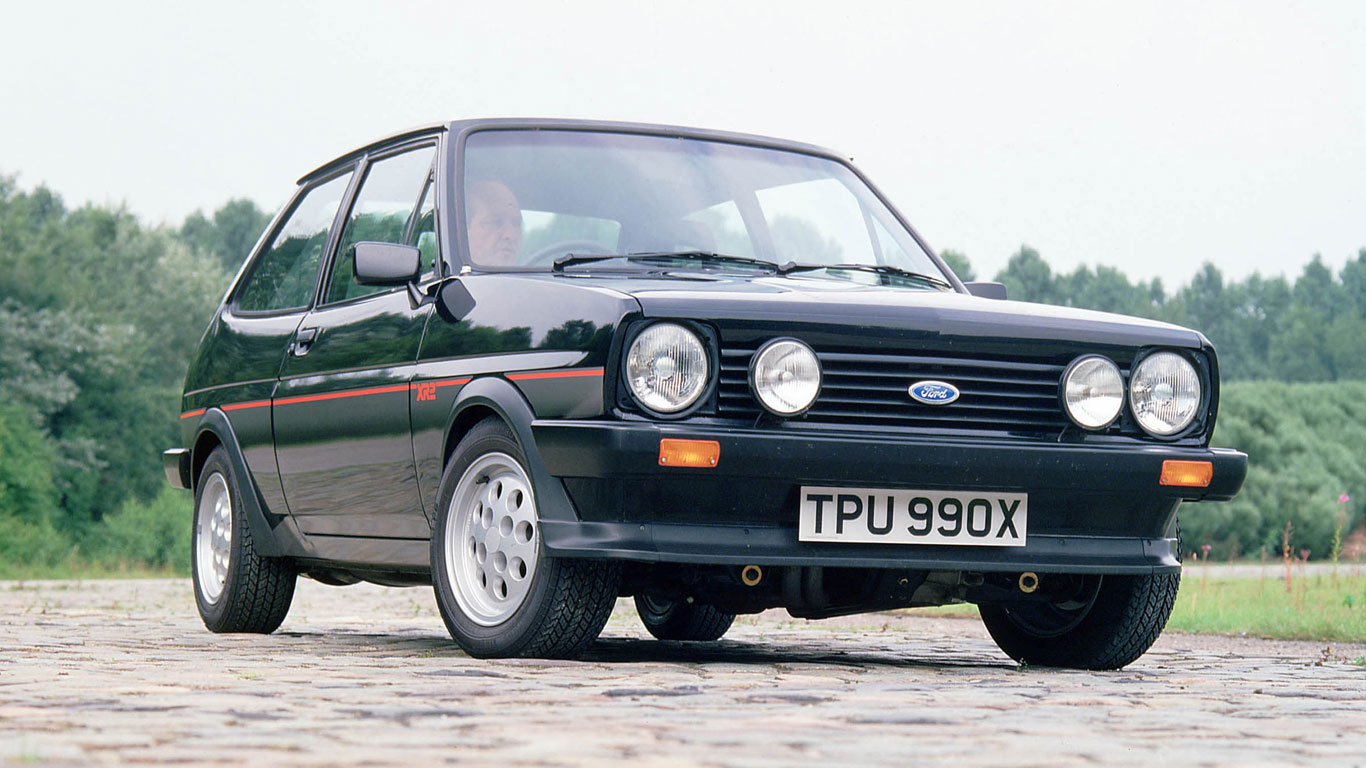
Mk1 Ford Fiesta XR2
© FordPitching a rally-bred special against a mass-produced go-faster special is perhaps a little cruel, but the hot hatch battle is no place for shy and retiring types. And besides, there’s nothing lily-livered about the Ford Fiesta XR2, which arrived in 1981. This was the second car produced by Ford’s Special Vehicle Engineering Department (SVE), following the Capri 2.8i.
A top speed of 104mph and a 0-60mph time of 9.4 seconds might not seem like a big deal in the age of the Fiesta ST, but these were different times. Crowbarring a 1.6-litre engine into a humble supermini was more exciting than watching Bucks Fizz at the Eurovision Song Contest. But we’re giving this particular battle to Vauxhall. Two-nil to the Griffin, and Cheryl Baker has kept her skirt on.
-
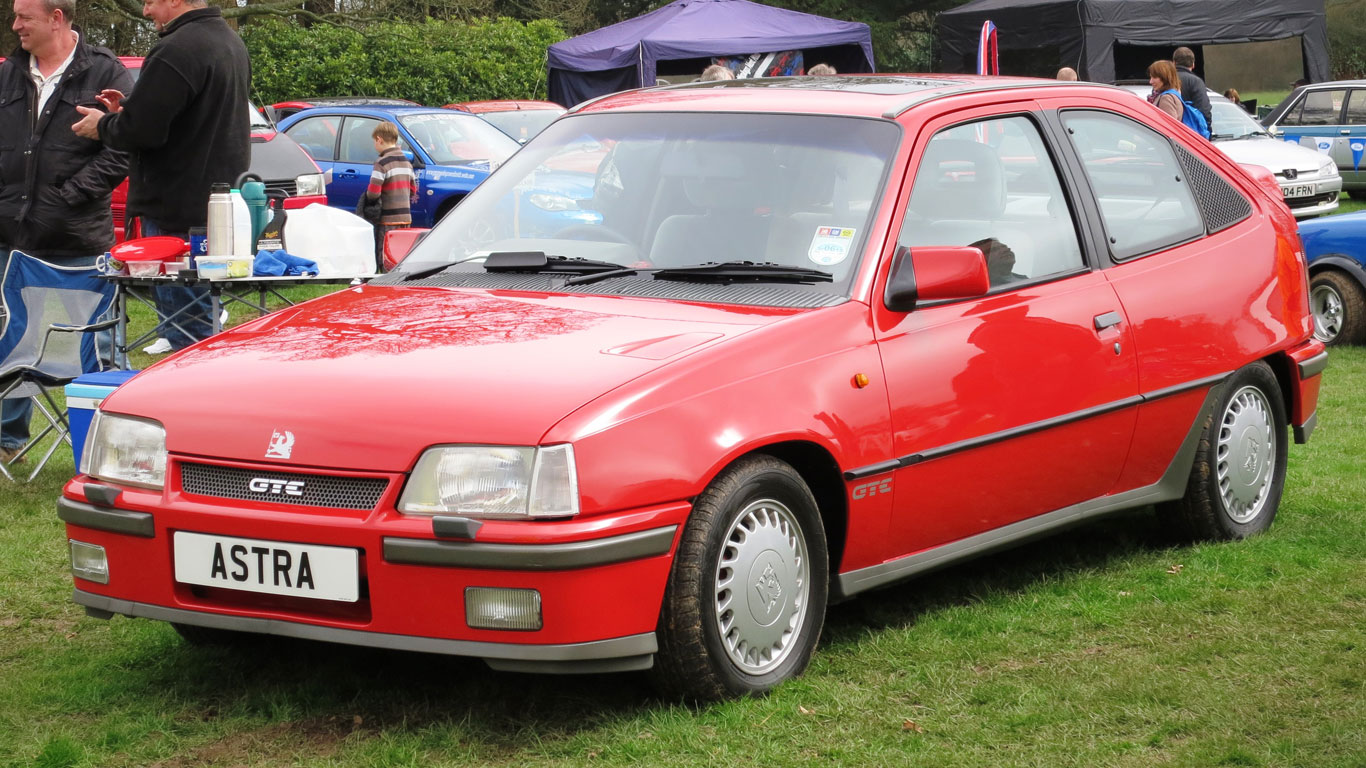
Mk2 Vauxhall Astra GTE
© VauxhallThe Mk1 Astra GTE barely had enough time to settle in before it was replaced by the pear-drop-shaped Mk2. The hot hatch genre was still in its infancy, but a changing of the guard was in progress, with the Mk1 Golf replaced by the Mk2 and a new fourth-generation Escort waiting in the wings.
Aerodynamic it might have been, but the new Astra GTE didn’t get off to the best of starts, with the 1.8-litre engine – praised in the Mk1 – criticised for its lacklustre performance. The suspension was another complaint, while contemporary reviews pointed to a lack of sparkle. The 1.8 unit was soon replaced by a 2.0, but it wasn’t enough.
-
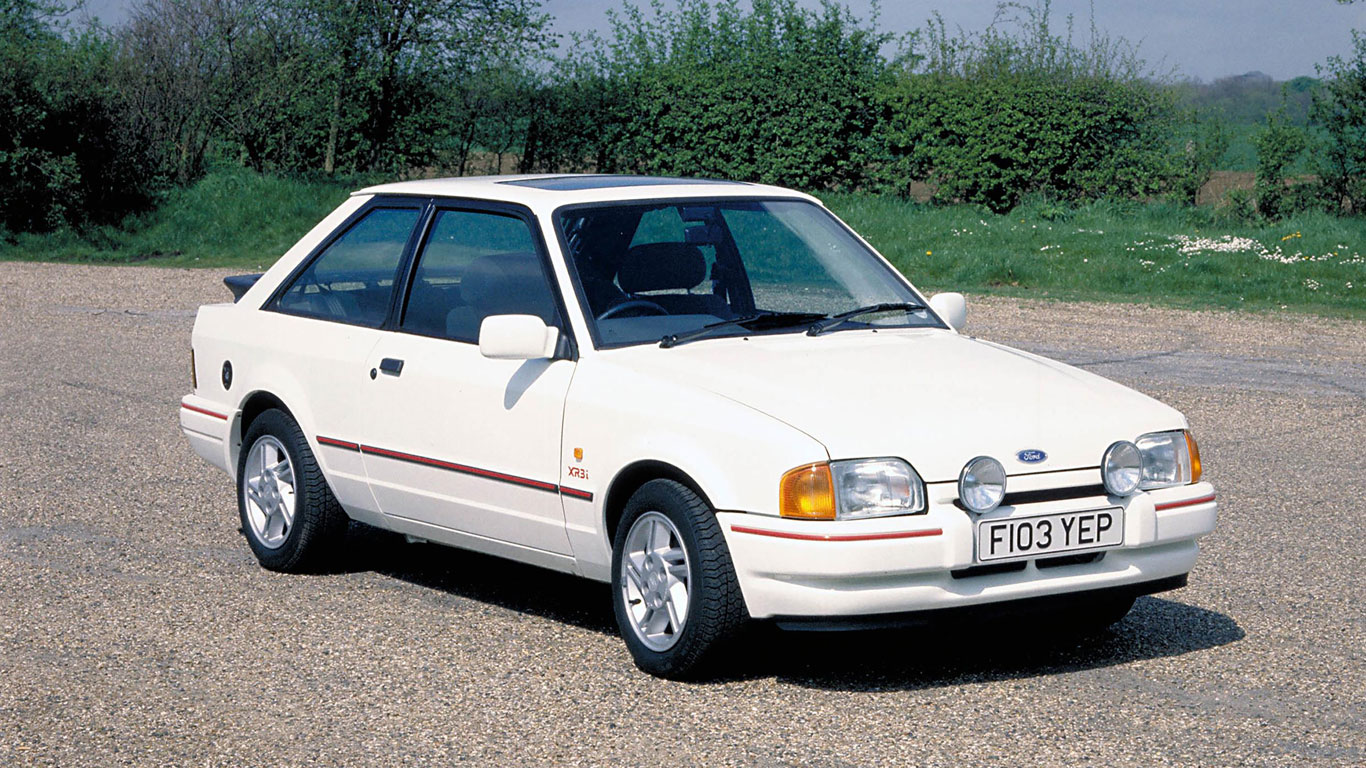
Ford Escort XR3i
© FordThe Astra’s chief rivals were the Fiat Strada Abarth, Mk2 Golf GTI and Escort XR3i. The Vauxhall and the Ford were a little out of their depth, with the XR3i in desperate need of a more powerful engine. Such hopes were dashed when Ford introduced the new XR3i in 1986, which used the same 1.6-litre unit.
In fairness, Ford worked on the engine refinement, while a revised suspension set-up provided sharper handling. The new styling and host of updates were enough to keep the XR3i relevant in a cut-throat segment and, while lacking the precision of the Golf GTI and new 205 GTI, ahead of the Astra GTE. Two-one to Vauxhall.
-
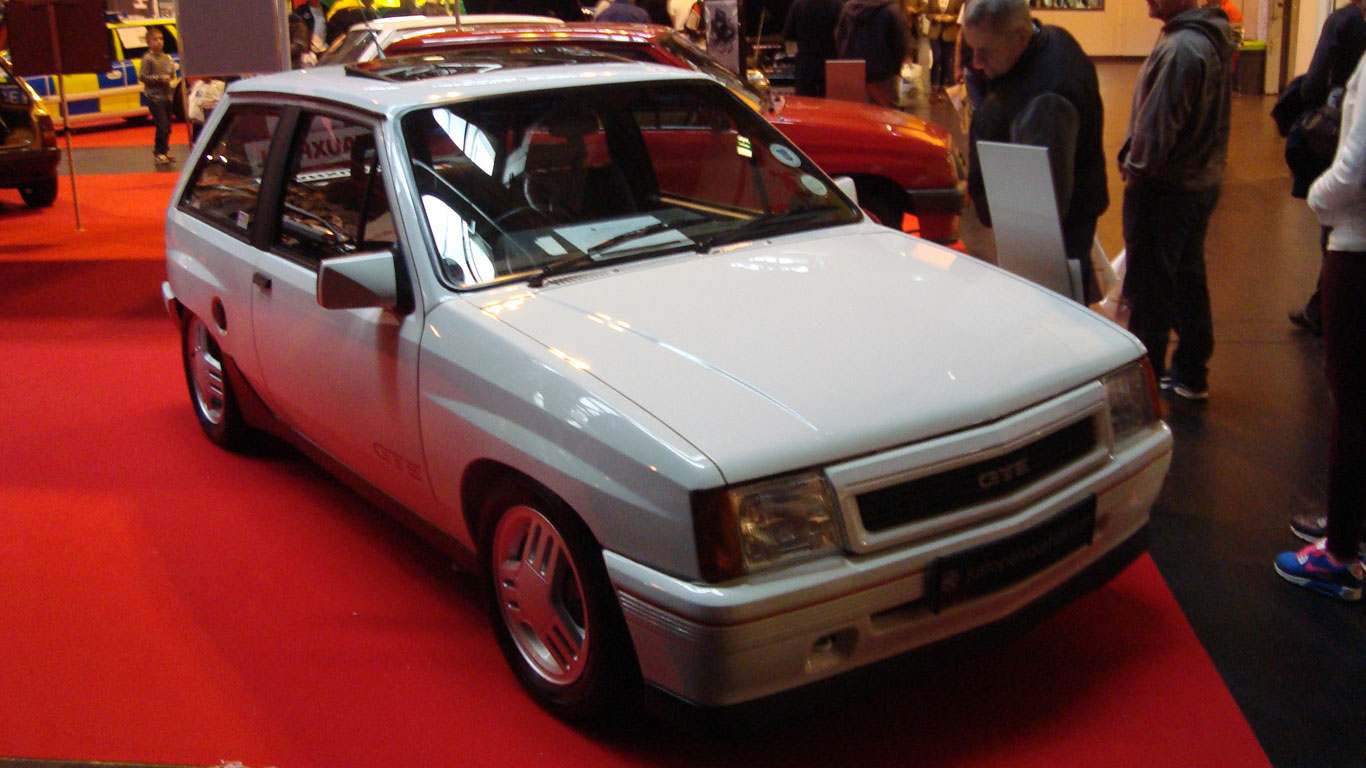
Vauxhall Nova GTE
© VauxhallIn 1988, your average 17-year-old was either dreaming of Cindy Crawford or the Vauxhall Nova GTE. Once again, Vauxhall was late to the party, with the Nova GTE arriving a year before the Mk2 Ford Fiesta XR2 was due for replacement. But in many ways, the 1.6-litre engine was the unit the Nova was always waiting for.
It was quicker than the XR2, with the Nova’s 0-60mph time of 9.1 seconds and a top speed of 117mph superior to the 9.3 seconds and 112mph of the Fiesta. Such details matter when you’re on the prowl for a Cindy Crawford of your own. And while it was more expensive than the XR2, it offered a superior overall package.
-
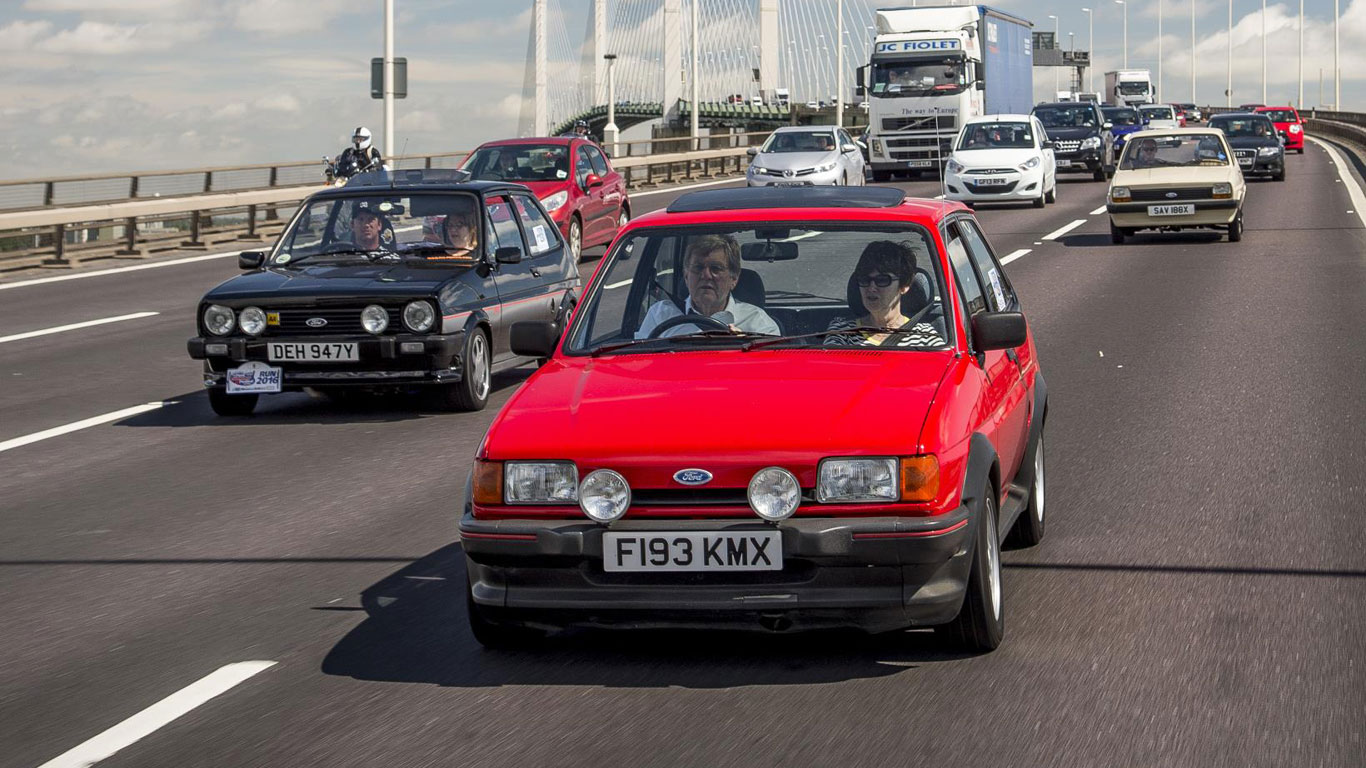
Ford Fiesta XR2
© FordSo it won’t take a genius to work out that Vauxhall has taken a 3-1 lead in our retro hot hatch showroom. Hey, you might disagree with us, but we’re sticking to our guns. Besides, there’s plenty of time for Ford to claw back some points.
The second coming of the Fiesta XR2 featured new aerodynamic styling, a 1.6-litre engine developed for the Escort and a five-speed gearbox as standard. And it looked the part, thanks to flared wheel arches, 13-inch alloy wheels and front and rear spoilers. It was, for many people, the first taste of the hot hatch recipe.
-
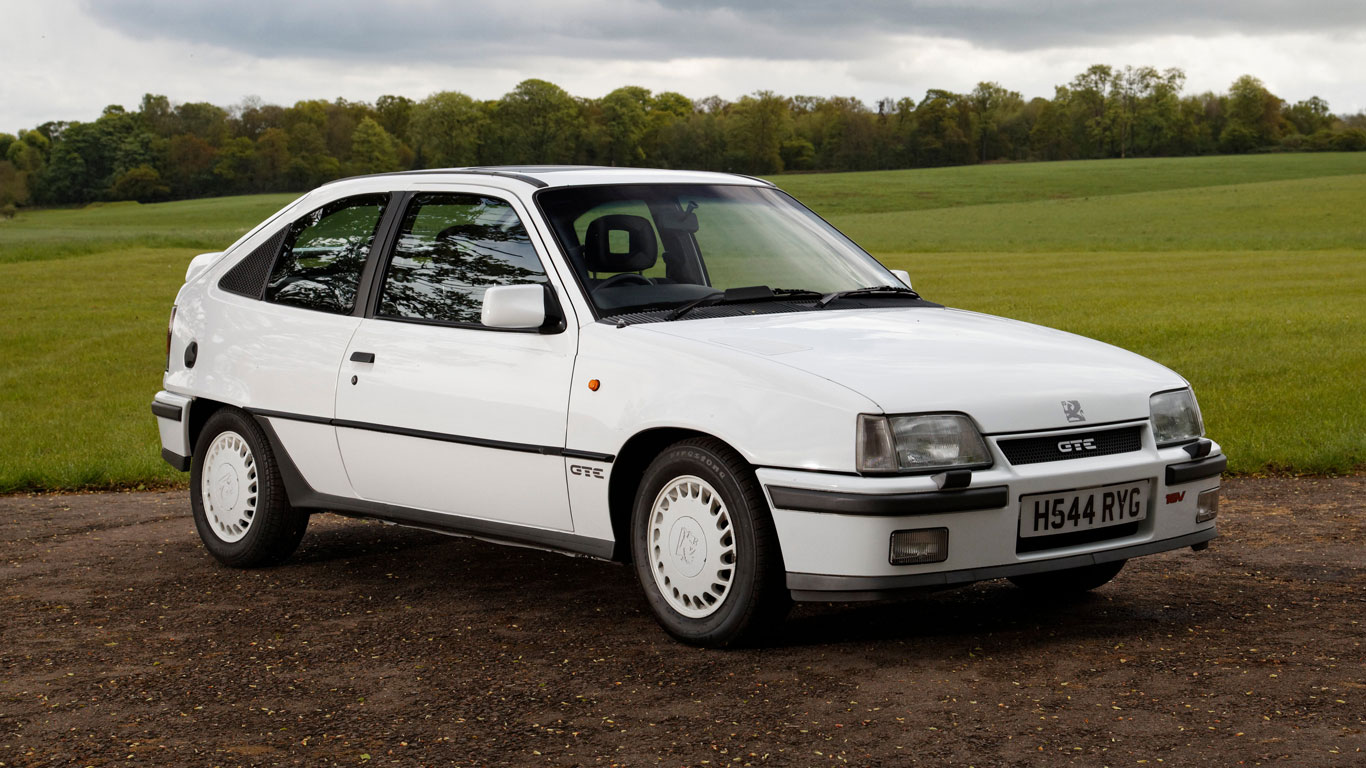
Mk2 Vauxhall Astra GTE 16v
© VauxhallPrepare for a battle royale. The final year of the 80s was a big one for Vauxhall, with the launch of the Lotus Carlton, a preview of the Calibra and this: the Astra GTE 16v. Finally, Vauxhall’s hot hatch pretender became the real deal, powered by a terrific 16v twin-cam engine.
In an age when turbocharging was becoming the norm, the 16v engine simply encouraged maximum attack driving, while the digital instruments were so of the period. It wasn’t perfect – the steering and brakes lacked feedback – but in just about every other way it felt like the definitive hot hatch.
-
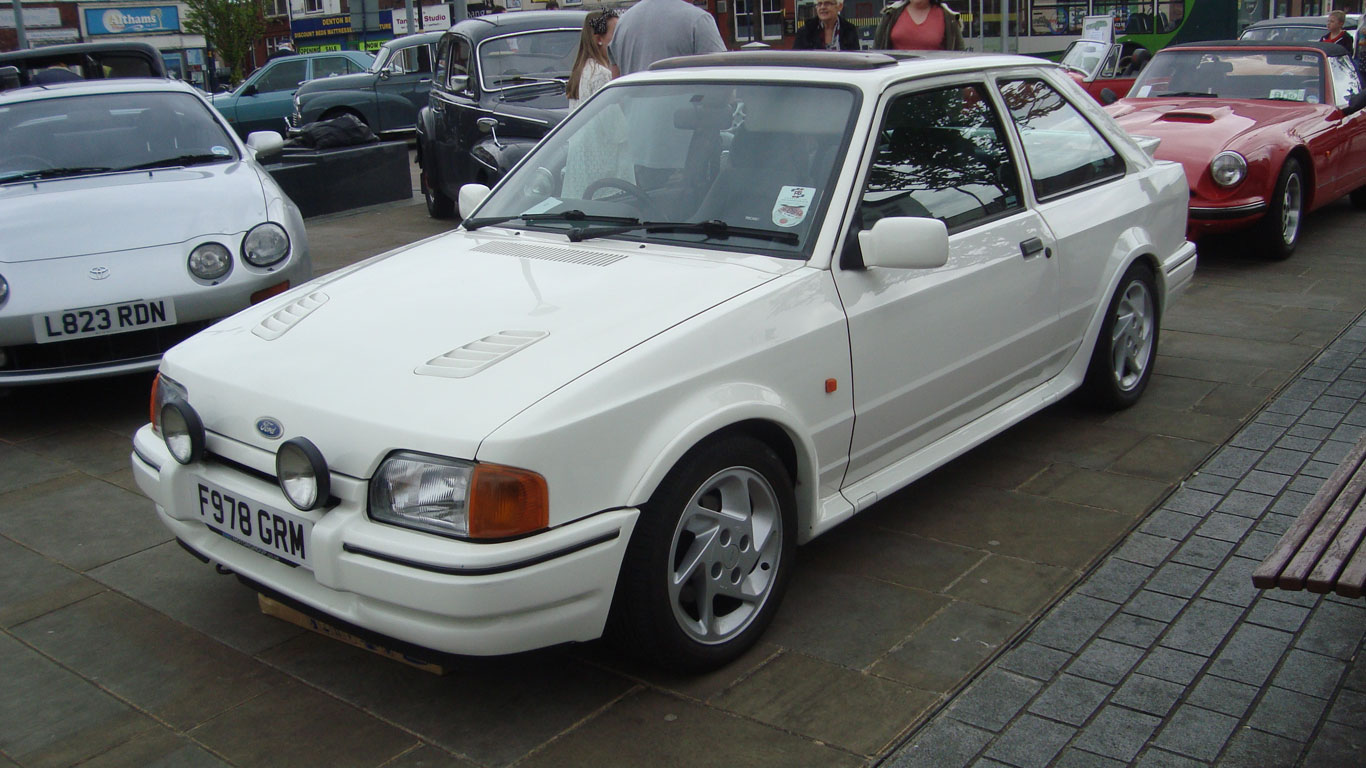
Ford Escort RS Turbo
© FordThe original Ford Escort RS Turbo was a homologation special produced in limited numbers by Ford’s Special Vehicle Engineering Department, powered by Garrett T3 turbocharged 1.6-litre engine. Its replacement was a series production model and less exciting as a result.
But it’s a credit to Ford’s styling department that the ageing Escort still cut a mean figure, despite being based on a product dating back to 1980. It also offered tremendous steering and handling abilities, but we’re giving the nod to the newer and fresher Astra GTE. Sorry, Ford fans, that’s 4-1.
-
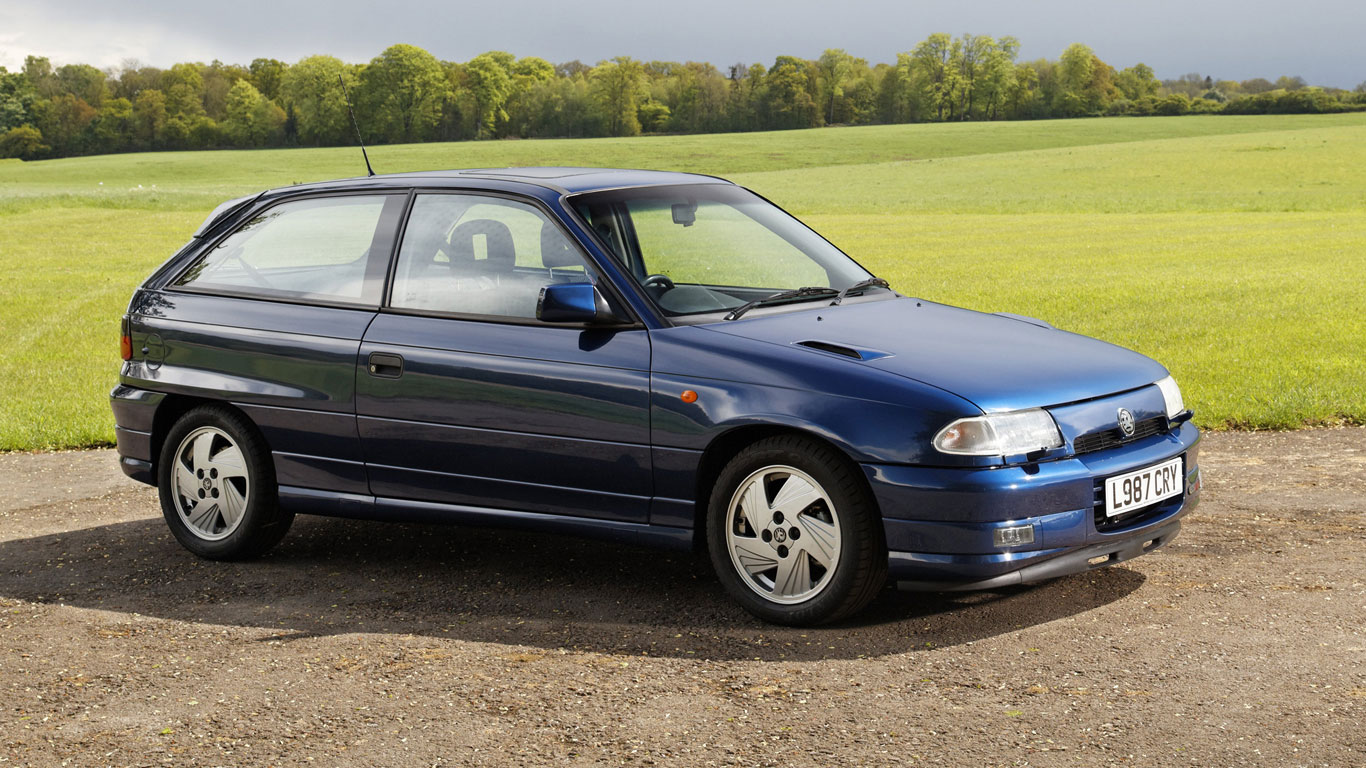
Mk3 Vauxhall Astra GSi
© VauxhallIn the early 90s, the 16v badge was a mark of respect, not to mention an invitation for some lowlife to go joyriding around the Blackbird Leys estate. The Astra GSI was Vauxhall’s joyride, armed with a 2.0-litre 16v engine packed with enough firepower to deliver a top speed of 130mph and a 0-60mph time of 7.4 seconds.
So, it was quick and it certainly looked the part, but it wasn’t the follow-up to the Astra GTE 16v we had hoped. The chassis and steering were less hot hatch and more lukewarm, while the traction control was a constant menace. This round must be Ford’s for the taking, then?
-
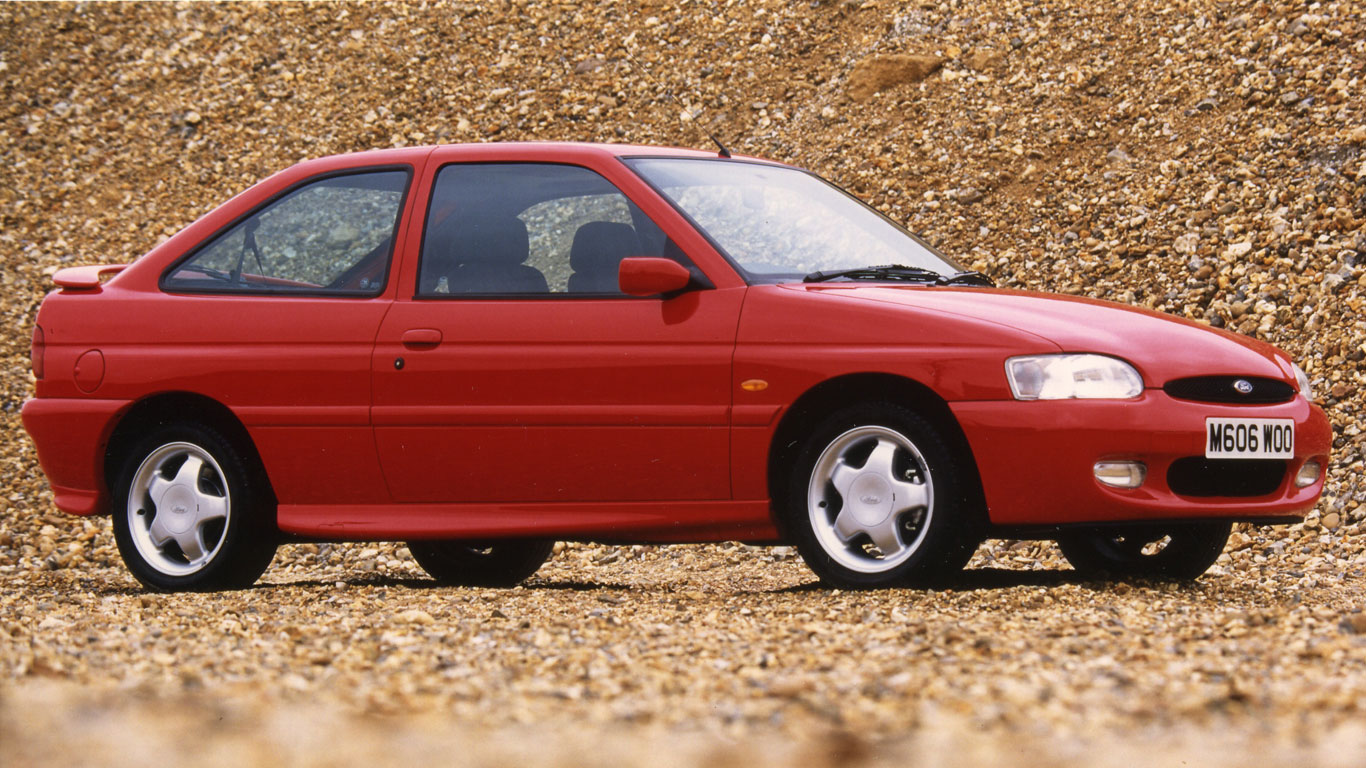
Ford Escort RS2000
© FordThe fact that we’re dealing with the hugely disappointing and lacklustre fifth generation Ford Escort isn’t the greatest of starts. Which only serves to make the brilliance of the RS2000 all the more remarkable. It’s like Clark Kent emerging from a phone box as Superman, Spiderman, Iron Man and Batman, all rolled into one.
Power was sourced from the Sierra’s 2.0-litre engine, providing a top speed of 130mph and a 0-60mph time of 8.5 seconds. Slightly slower than the Astra, then. The major difference is that the RS2000 was a genuine delight to drive: you could throw one of these into a corner with confidence, grinning from ear to ear. No contest: 4-2 to Vauxhall.
-
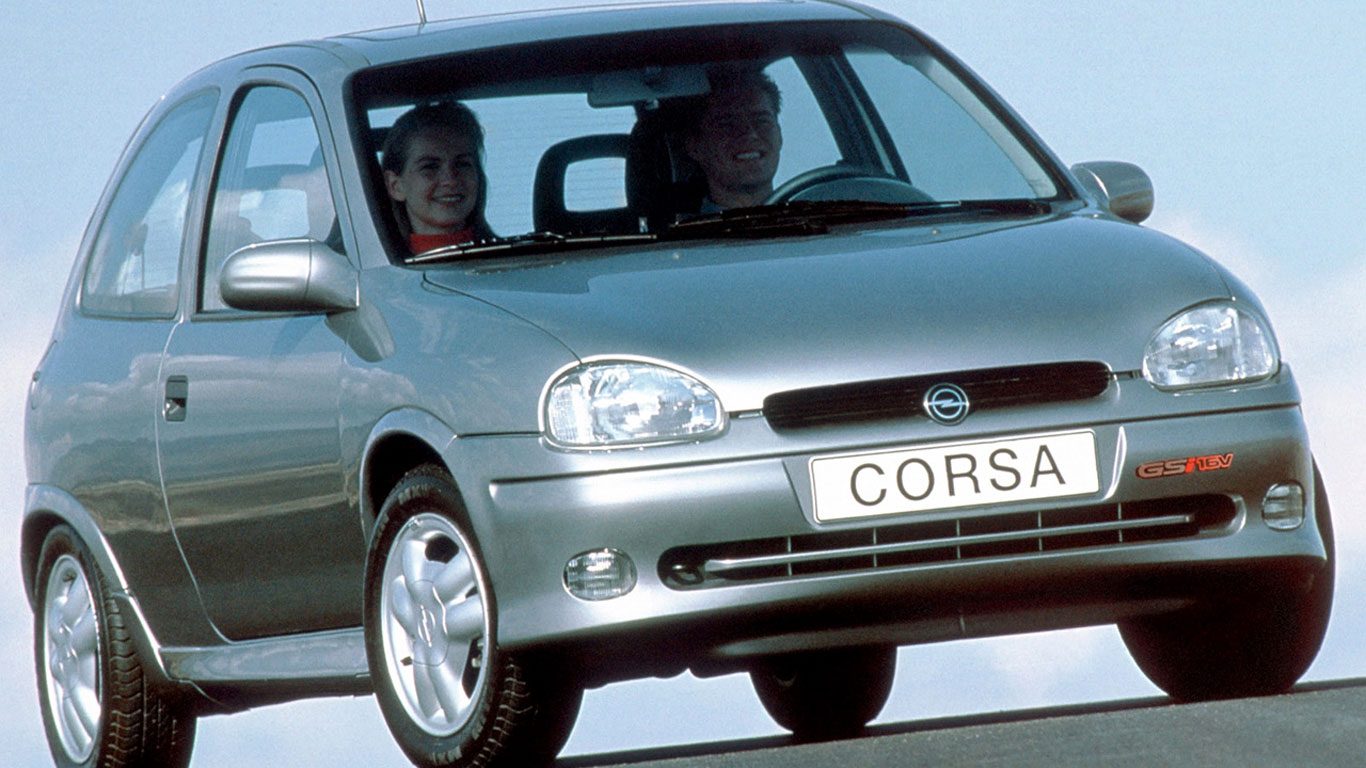
Vauxhall Corsa GSi
© VauxhallPretty thing, isn’t it? Something that’s easy to forget when two decades have passed, but the original Vauxhall Corsa was genuinely good looking. But what about the Corsa GSI, with its 1.6-litre engine and pert styling?
It’s not hard to see why it was so popular, with an eager-to-please nature and arguably the best all-round capabilities of the group of junior hot hatches. Dynamically, it fell short of the benchmark set by the Peugeot 106 XSi, but could it beat the challenger from Ford?
-
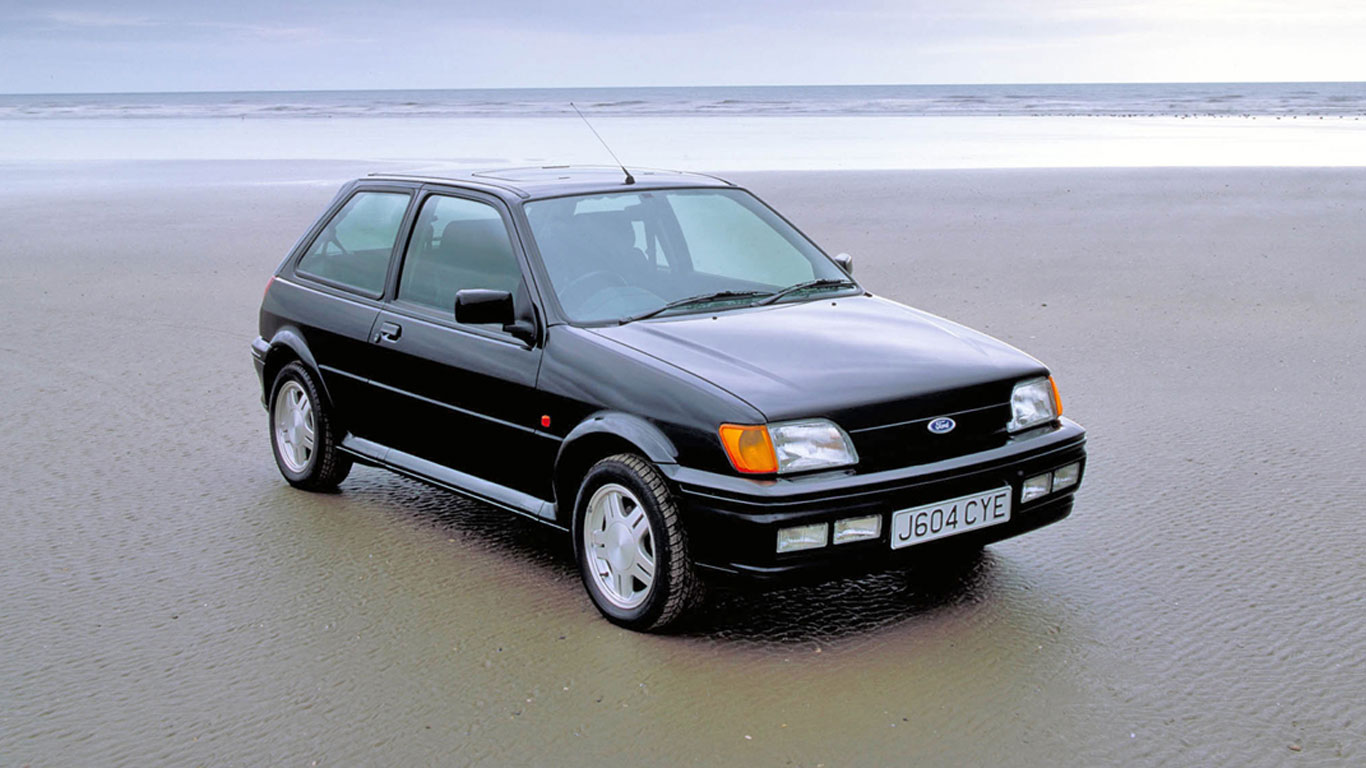
Ford Fiesta RS1800
© FordThe Mk3 Fiesta, launched in 1989, was based on the Mk2, which itself was a facelift of the Mk1. Needless to say, the hot versions were overshadowed by the crop of newer, fresher rivals. The RS Turbo was quick but flawed, while the XR2i was fun and sold in big numbers.
Ford’s decision to put the RS Turbo out of its misery should be viewed as an act of kindness, not least because its replacement, the RS1800, was a little more polished. Power was sourced from a new 1.8-litre Zetec engine, while the suspension was thoroughly reworked to provide ride and handling prowess. Against the RS Turbo or XR2i, we’d have given this to Vauxhall, but based on the RS1800, we make that 4-3 to Vauxhall.
-
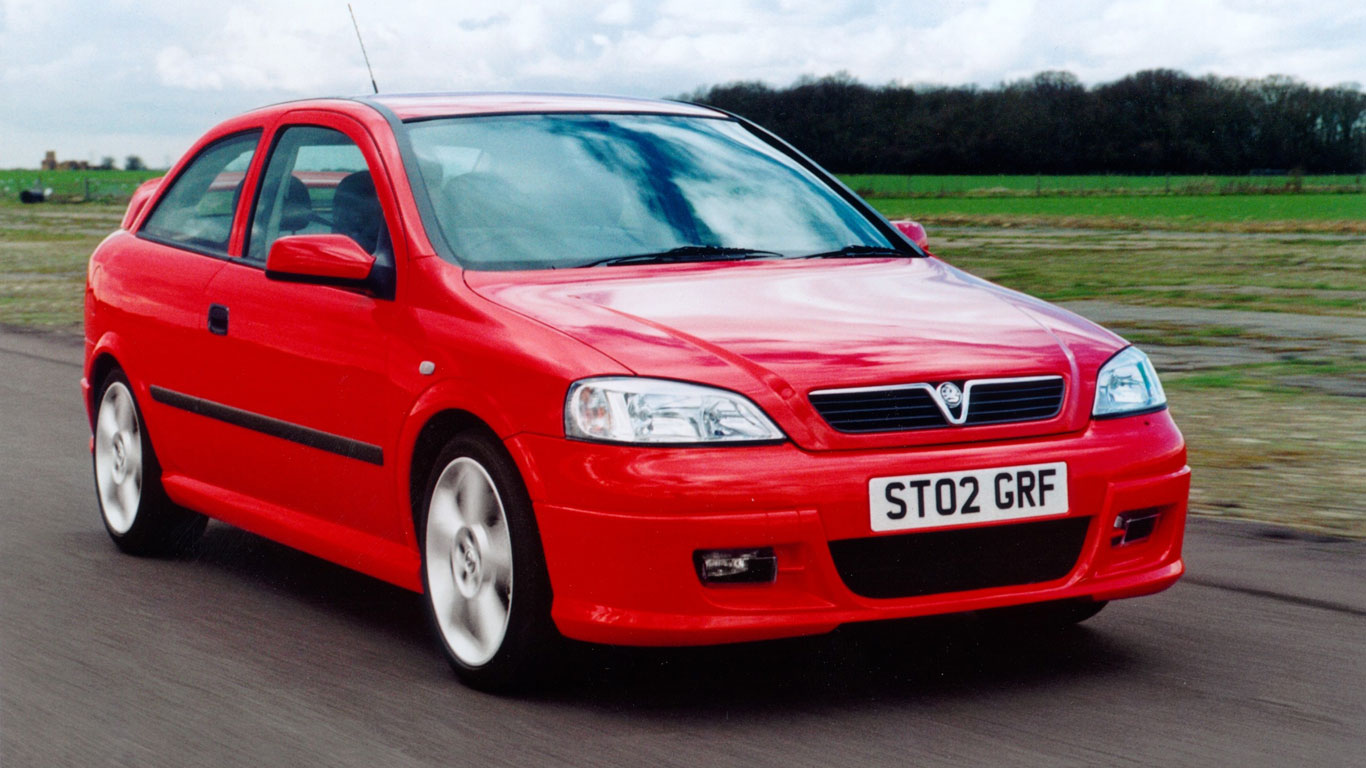
Vauxhall Astra SRi Turbo
© VauxhallThe all-new Mk4 Vauxhall Astra was far superior to the Mk3, but was a little overshadowed by the Ford Focus, which made the Escort look like something Fred Flintstone may have taken to the drive-in.
In 2002, Vauxhall launched the flagship Astra SRi Turbo, offering around 190hp, a top speed just shy of 150mph and a 0-60mph time of 6.7 seconds. It was short-lived and only sold in limited quantities. By our reckoning, there are only 150 on the road.
-
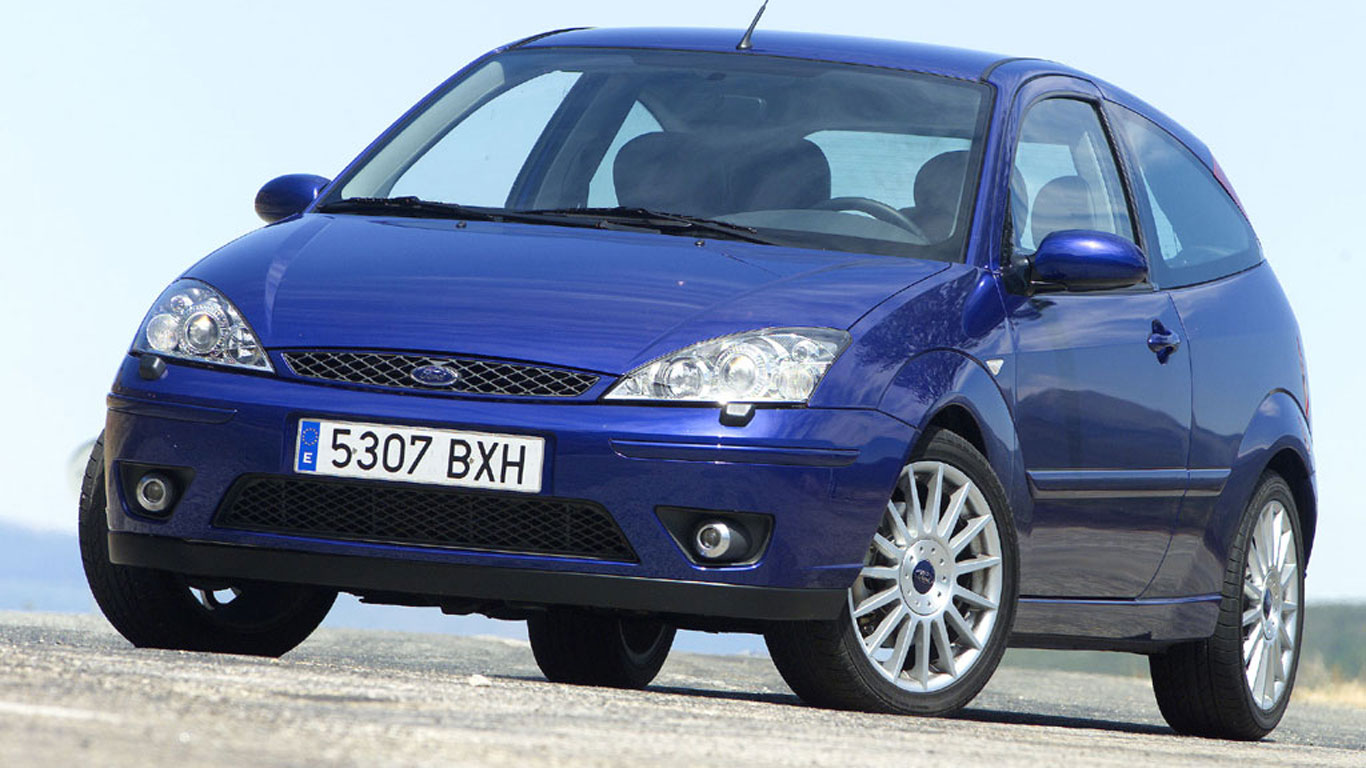
Ford Focus ST170
© FordThe Astra SRi Turbo wasn’t a bad car – far from it – but competition was strong. Pick and choose from the SEAT Leon Cupra, Honda Civic Type R and this: the Ford Focus ST170. This was the first taste of a fast Focus: the hors d’oeuvre while we waited for the RS main course.
But while the Focus RS was all arches and in-yer-face styling, the ST170 was a more low key affair. It was no surprise that the handling was little short of brilliant – the base car was equally great – but the 2.0-litre engine was lacking in outright pace. Not that this seemed to trouble the 13,000 or so UK buyers so who splashed the cash on the ST170. Vauxhall 4-4 Ford.
-
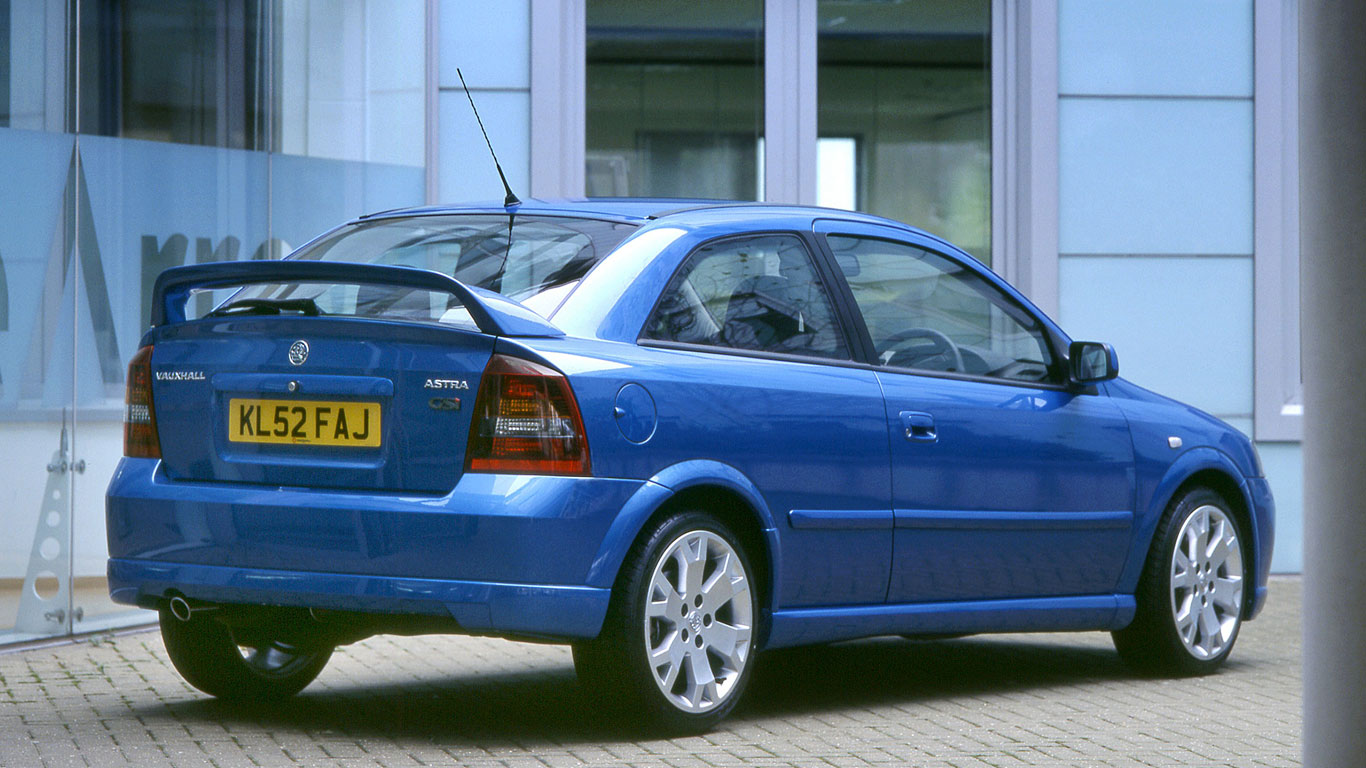
Vauxhall Astra GSi Turbo
© VauxhallBut if the Astra SRi was designed to steal sales from the ST170 (it didn’t, by the way), the GSi Turbo was positioned to raise the game. The styling was more aggressive, while more poke from the 2.0-litre Ecotec engine nudged the new flagship Astra to the magic 200hp mark.
Once again, the Vauxhall favoured straight-line speed over handling prowess, making this 150mph hot hatch a match for the Civic Type R and Leon Cupra R. But it fell short of greatness, especially when viewed alongside Ford’s latest weapon…
-
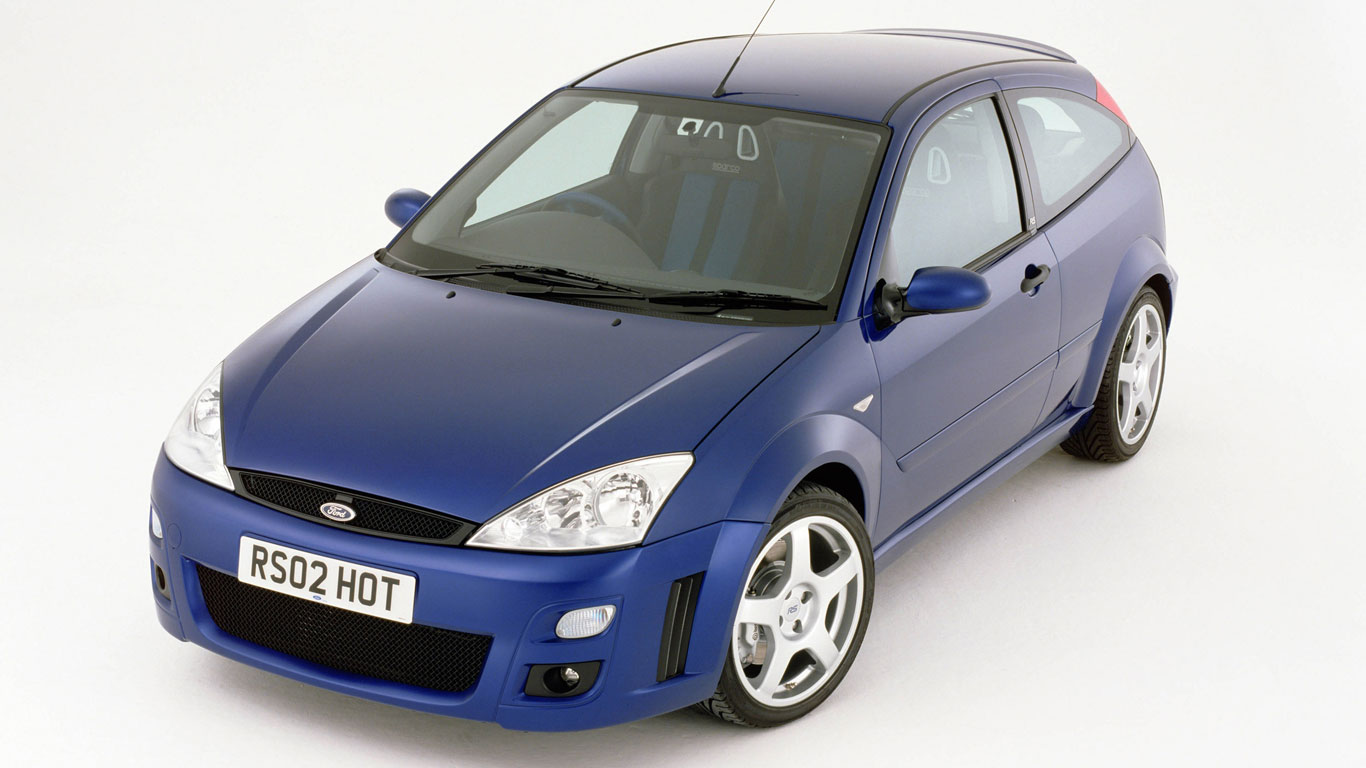
Ford Focus RS
© FordYes, yes, yes, we readily admit that pitching the Astra GSI Turbo against the Focus Focus RS is a little unfair. And, yes, the Focus RS was around £3,500 more expensive than the hot Astra, which remained more of a rival to the ST170. But with a touch of naughtiness, Ford positioned the Focus RS press ads alongside road tests for the GSi.
The hot hatch war is a cut-throat business. This isn’t to say that the Focus RS was perfect: contemporary reviews were mixed to say the least. But it offered tremendous performance and more than lived up to its Rallye Sport monicker. And it helps Ford nudge ahead of Vauxhall for the first time: 4-5.
-
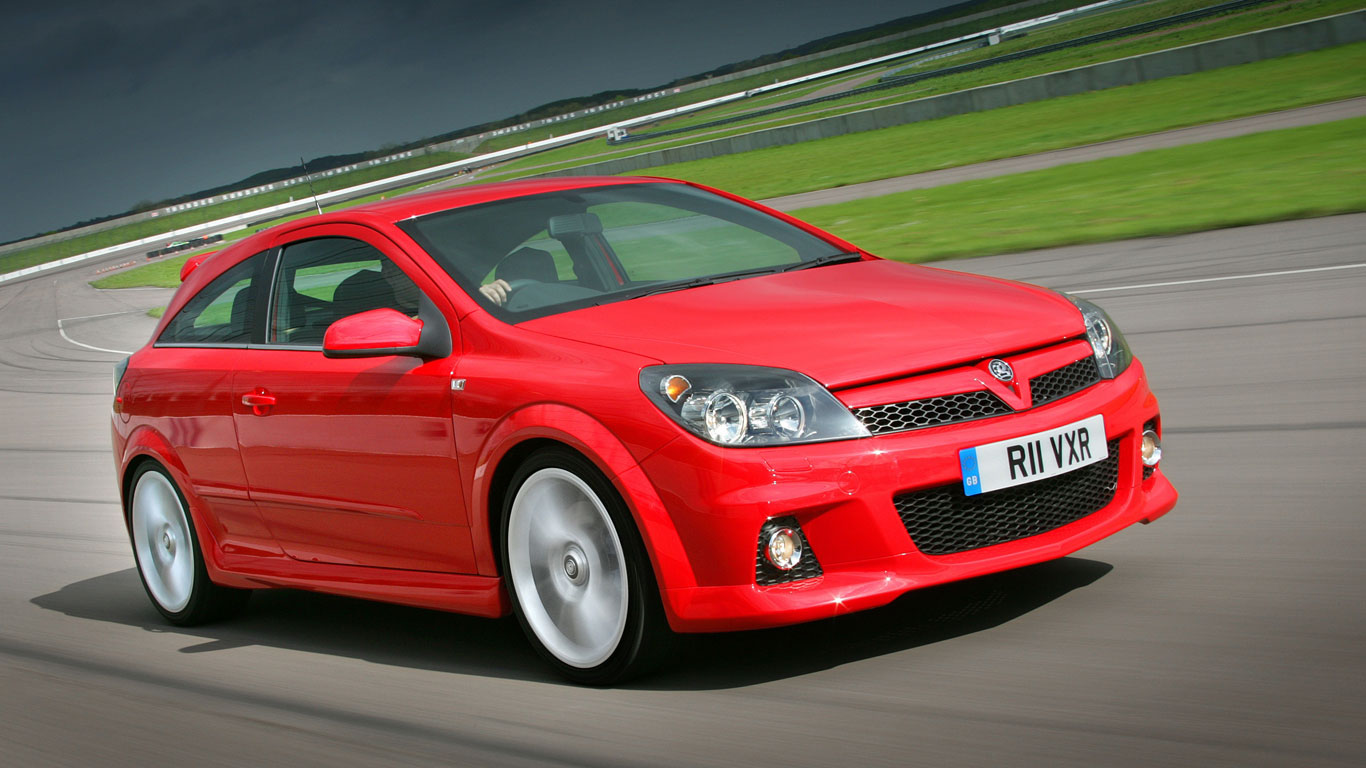
Vauxhall Astra VXR
© VauxhallVauxhall responded in the only way it knew how: more power. The VXR brand was launched in 2004, initially with the VXR220, followed by the Monaro VXR, and then this: the Astra VXR of 2005.
The signs were good: a chassis part-developed by Lotus, more power than a Renaultsport Megane 225 and Focus RS, and a 0-62mph time of 6.7 seconds. It also undercut the Focus RS by a grand. But once again, it felt like too little, too late.
-
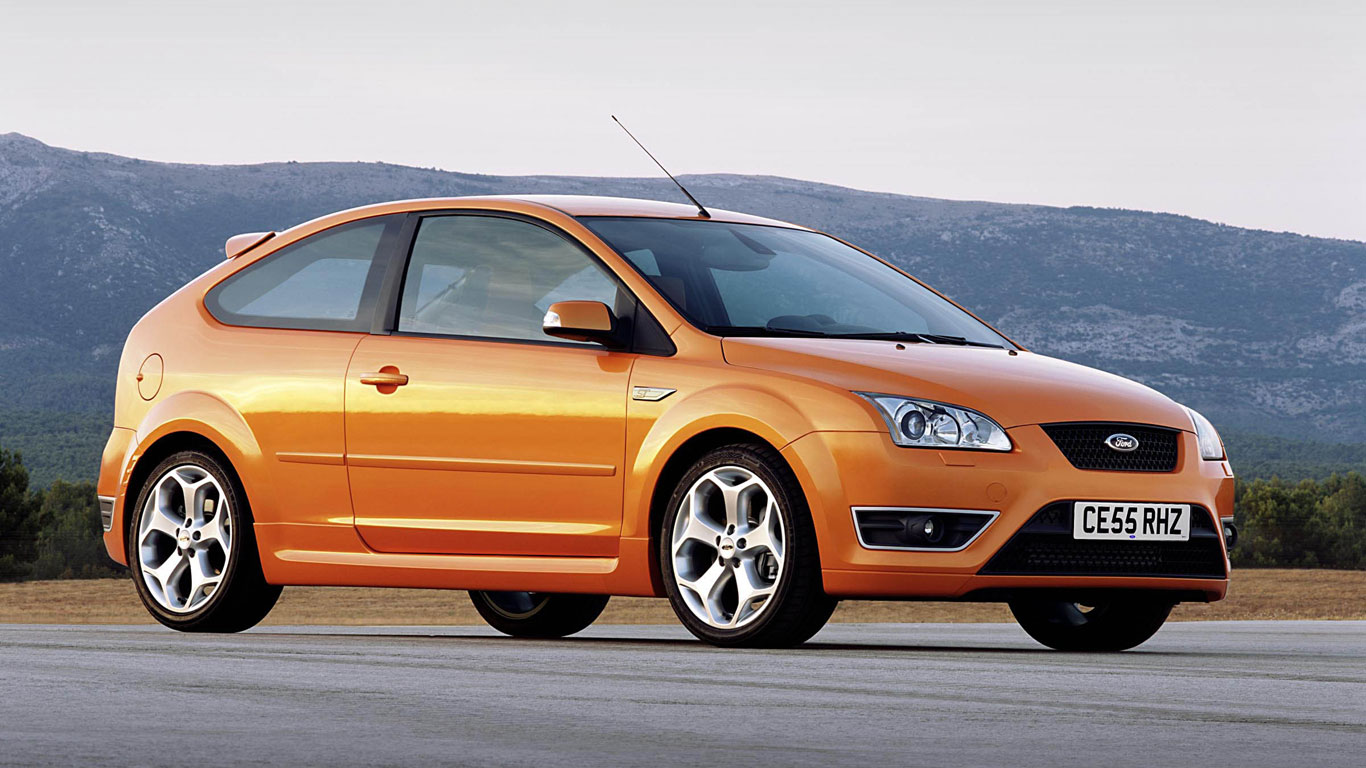
Ford Focus ST
© FordYou see, Vauxhall was about to be ‘Tangoed’ by a bright orange Ford Focus. If the ST170 was disappointing, the ST was anything but. Forget the Astra VXR, the hot Focus was set to threaten the supremacy of the brilliant Mk5 Volkswagen Golf GTI.
It was cheaper, more powerful and blessed with the delightful symphony of a five-cylinder engine. Choosing between the Focus and the Golf was a real challenge, but the Astra VXR was left wanting. That’s 4-6 to Ford.
-
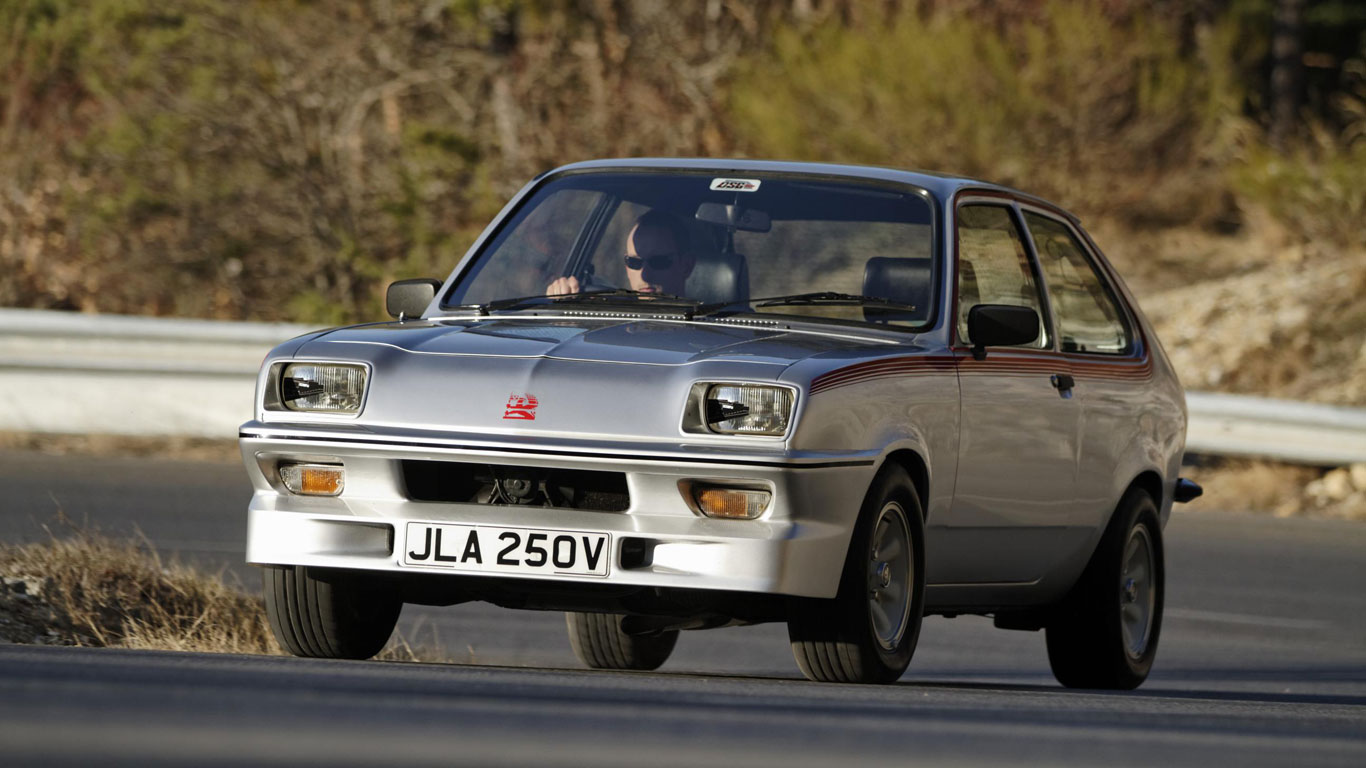
Vauxhall Chevette 2300 HS
© VauxhallAnything beyond 2005 is stretching the ‘retro’ tag, so we’ll head back to check out a pair of homologation specials. The Chevette 2300 HS was built for Group 4 rally purposes and powered by a 2.3-litre twin-cam engine.
A top speed of 117mph and a 0-60mph time of 8.5 seconds might not seem impressive today, but in the late 70s this was a seriously quick car. It also out-muscled anything Ford had to offer.
-
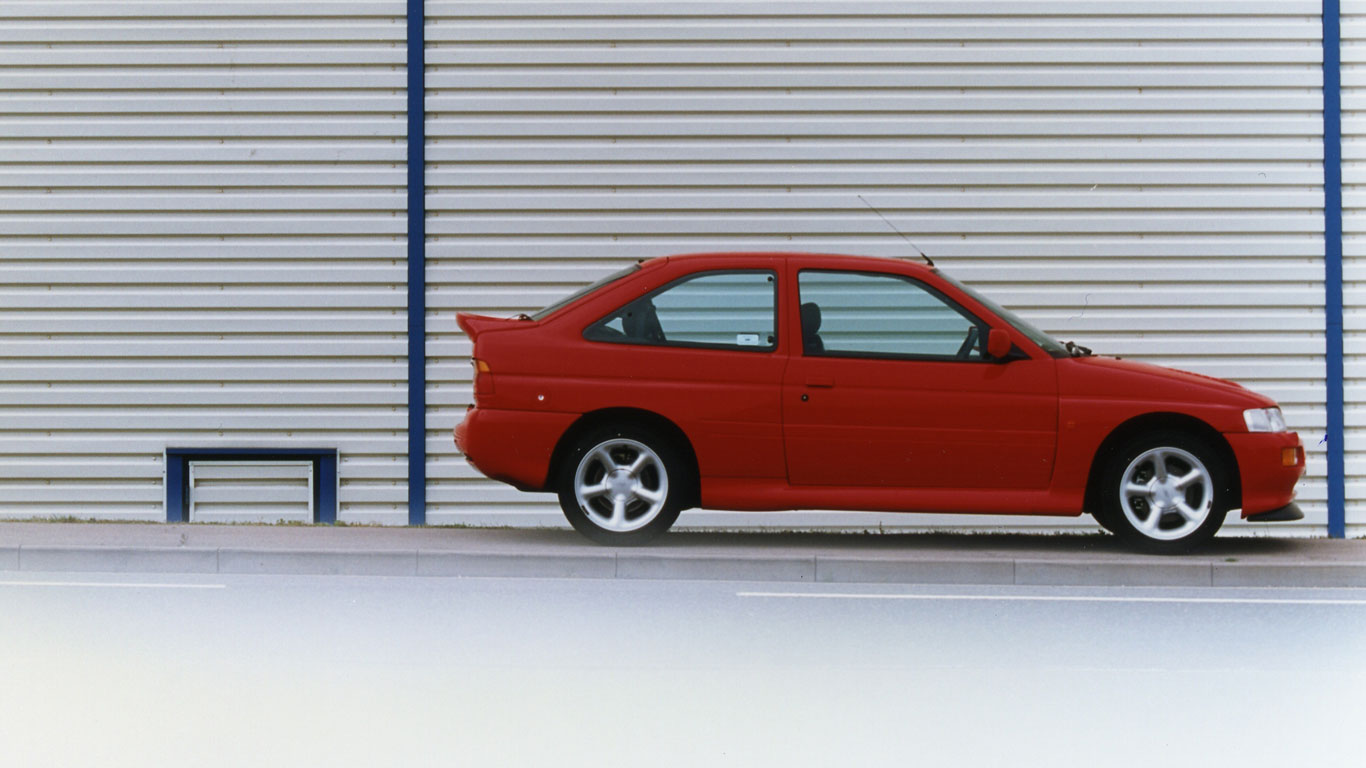
Ford Escort RS Cosworth
© FordFast forward 25 years to when Ford built a legend. That the Escort RS Cosworth was essentially a Sierra RS Cosworth in an Escort suit is irrelevant, because this thing had it all. Pace, handling, extrovert styling: it was the pin-up star for a legion of fast Ford fans and car thieves.
The Chevette HS and Escort RS Cosworth are from different eras and built a generation apart, so to compare them would be unfair. We’ll call this a draw, not least because we’ve driven the Chevette on Route Napoleon, where it was seat-of-your-pants fantastic.
-
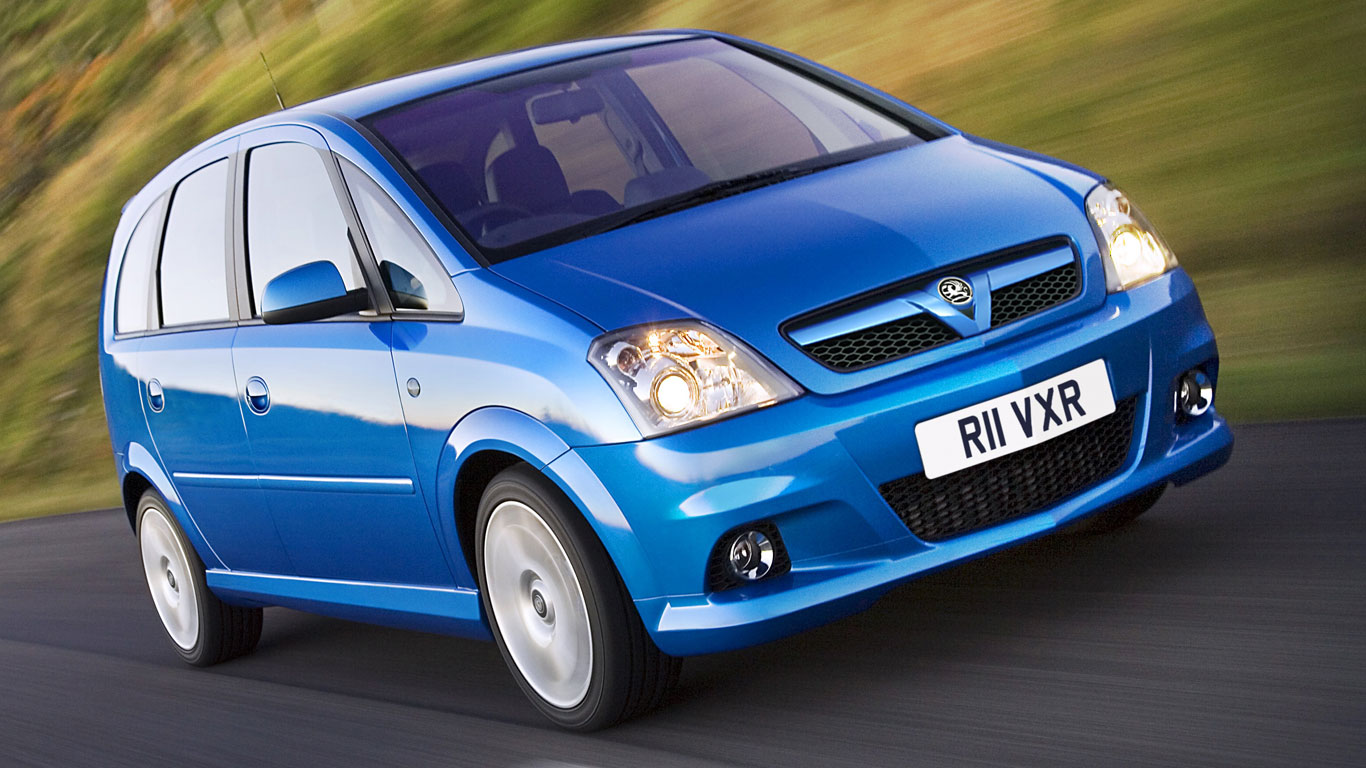
Vauxhall Meriva VXR
© VauxhallWe’ll conclude with a pair of left-field choices, starting with a real oddball: the Vauxhall Meriva VXR. One to file under ‘What were they thinking?’, Vauxhall applied the VXR treatment to the depressingly dull Meriva.
It was powered by a 1.6-litre turbocharged engine developing 180hp, enough to propel the mini-MPV to a top speed of 137mph. At £16,500, it wasn’t cheap: too expensive for Meriva buyers and at a price point that meant it had to compete with ‘proper’ hot hatches.
-
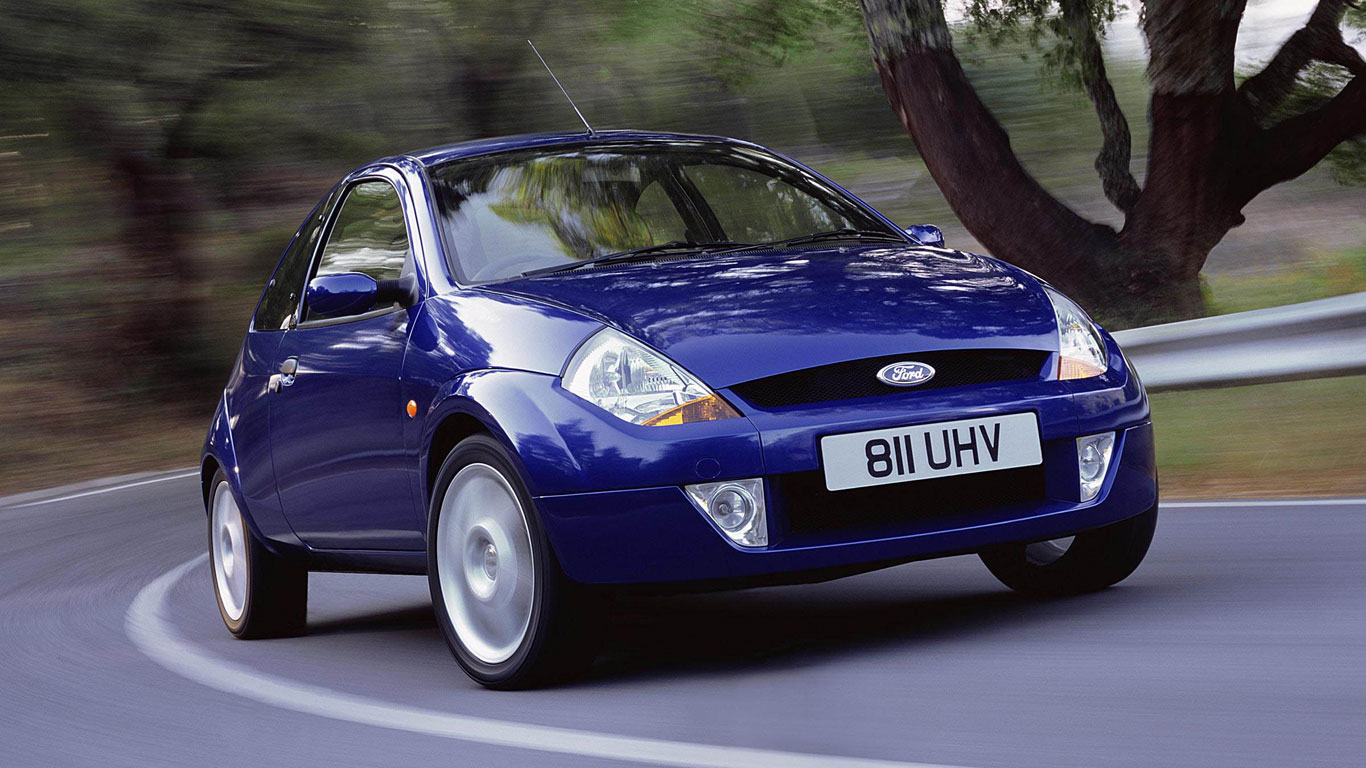
Ford SportKa
© FordOur left-field choice for Ford is also powered by a 1.6-litre engine, only this time without the benefit of a turbocharger. The Ford SportKa used the suspension from the brilliant Ford Puma and a close-ratio gearbox to evoke memories of old-school junior hot hatches.
It was terrific fun, but for the sheer madness of the thing, we’re giving this round to the Meriva VXR. But that’s not enough for Vauxhall to draw level, as our playground battle ends with a narrow victory for Ford.
Ford and Vauxhall: the battle for 1980s hot hatch honours
Ford or Vauxhall: who wins the battle of the blue collar hot hatch heroes?
Home Ford and Vauxhall: the battle for 1980s hot hatch honours
News
Classic comeback: Alvis delivers first new Graber Drophead
Destined for Japan, the Alvis Graber Drophead features an engine block first constructed more than 50 years ago.
TVR T440R: unique Le Mans homologation special heads to auction
To be sold at the Iconic Auctioneers Supercar Fest sale, this one-off TVR T440R is an extreme Tuscan intended to race at Le Mans.
For sale: Ayrton Senna’s classic Honda NSX
A 1991 Honda NSX, first owned by the late F1 legend Ayrton Senna, is listed for sale on Auto Trader with a £500,000 price tag.
Features
Popular cars disappearing from our roads
From the Ford Cortina to the Vauxhall Belmont, we look at 25 cars that are a shadow of their former selves.
The 10 worst Ferraris ever made
Not even Maranello is perfect all the time – as this list of Ferrari fails shows
Britain’s favourite cars of 1995
We turn the clock back 25 years to reveal the 25 most popular cars in 1995. Where have all those Orions and Montegos gone?
Reviews
1997 Vauxhall Calibra V6 review: Retro Road Test
A sleek and sophisticated coupe or a glammed-up Vauxhall Cavalier? As our road-trip reveals, the classic Calibra V6 can be both.
2004 Volkswagen Golf GTI Mk5: Retro Road Test
The fifth-generation VW Golf GTI is arguably the best of the breed, with a punchy engine, agile handling and no-compromise practicality.
1992 Skoda Favorit review: Retro Road Test
The Favorit represented the dawn of a new era for Skoda. With Bertone styling and an amenable character, it's an interesting modern classic.
